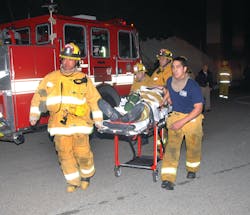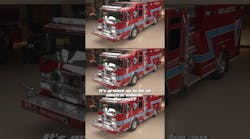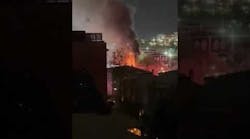Many of the installments of this series refer to the new challenges that have been placed upon the fire service and, more specifically, how to pay for those services. Many government agencies – federal, state and local – are critically examining their expenditures and making attempts to balance budgets while managing rising service expectations.
This is compounded by the reality of reduced revenue streams to support the many government services delivered. To a large extent, the easy budget cuts have all been made. Fire departments are now being asked to examine several long-held beliefs on how services are delivered. Question 7 speaks directly to examining one of these traditional beliefs – response protocols. Is it appropriate to respond to all calls for services with an engine or ladder apparatus?
Organizational efficiency
At the heart of this question is organizational efficiency. Are you using your limited resources in the most cost-effective manner to provide service? Looking through the lens of elected officials, the view equates efficiency to budget dollars expended. And to a large degree they are correct in that efficiencies are often directly related to expenditures; in this case, driven by how we use our resources. Staffing and equipment equate to budget dollars spent. City leaders expect their department managers to demonstrate efficiencies in their operations. In the new economy, efficiency is no longer optional. It’s a requirement.
City administrators often turn their sights on the efficient use of staff. They question our perceived need to have four (or more) firefighters responding to non-life-threatening EMS calls. They also question the staffing for the perceived minor calls for service. In terms of the efficient use of resources, we are being asked to justify why we perceive the need to send four firefighters on an apparatus that is very expensive to purchase and maintain.
Be ready to answer
Whether we like it or not, these are fair questions and anyone in a position to steward public money should have the right to ask them and be provided with good answers. In jurisdictions where the public safety response to a medical emergency or minor fire call also includes the dispatch of police officers and, in some jurisdictions, a third-party EMS provider, it should be easy to see why city officials may question the need for so many resources to respond. The essence of the question may be paraphrased this way: Do you really need four highly trained firefighters, riding in an expensive taxi, to deliver a service that in all probability only requires two responders in a much smaller and more efficient vehicle?
Looking at this issue purely from the viewpoint of resource expenditures to outcomes, responding in smaller vehicles with fewer people makes sense. The goal of fire service leaders should be to ensure the response model reflects an efficient use of resources while maintaining quality service that accounts for the safety of the firefighters. Is it possible to reshape our response protocol without sacrificing service while achieving a reduction in operating costs?
The response protocols for many U.S. fire departments are based on a model designed around responses to structure fires. This means there are some jurisdictions providing services using a decades-old delivery model despite a reduction in structure fires in recent years. And while fire responses have been declining, the demand for EMS has risen steadily.
Arguably, the core business of the fire department will remain – extinguishing fires and rescuing people from predicaments. However, the time to reevaluate our response to minor emergencies is upon us. Sending large fire apparatus with more staffing than is needed to minor calls is not efficient.
Defend your position
As we talk to fire service leaders from around the United States this is becoming a common question. Unfortunately, many fire service leaders are not used to having their response protocols questioned and find it offensive. This can lead them to view the question as an attack in their expertise. This, in turn, can lead to an emotionally driven response that may include statements perceived as using scare tactics. Such tactics may have worked in the past, but in today’s economic environment you’re risking the loss of your credibility. This problem can be made worse if you try to defend your position with inaccurate statements or incomplete data.
One concern revolves around the potential consequences of splitting up the staffing to satisfy the use of smaller vehicles on minor calls. The belief is this may reduce safety and effectiveness on the fireground. This can trigger emotional responses such as “people will die” or “buildings will burn down.” In our experience, it’s best to address these concerns with quantifiable data acquired from reputable organizations and institutions.
The need to keep crews intact to adequately staff the fireground is critical to firefighter safety. This is often the justification for why large fire apparatus with full crews are sent to all calls for service, including medical emergencies. When someone suggests splitting up crews, the topic becomes contentious.
When the suggestion to have two firefighters assigned to an engine and two firefighters assigned to a smaller response vehicle the justification is rooted in firefighter safety at structure fires. We need the crew of four firefighters, intact, to engage in an offensive structural fire attack.
Provide alternatives
There are many occasions where fire departments arrive on the scenes of structure fires with an initial-response team of less than four firefighters. They key is to ensure all firefighters are trained on how tactics vary based in staffing levels. The training is complemented by the discipline to only perform fireground tasks that can be safely completed with the staffing available. Departments should also train on how to perform initial tasks with limited staffing. This component can be missed during live-fire training because the staffing levels are always adequate – and readily available.
Department operating guidelines should also provide strategic and tactical alternatives based on staffing. These standards should also address crew expectations when arriving understaffed. Otherwise, firefighters may engage in the same fashion as when there is adequate staffing, increasing risk-taking to unacceptable levels. Organizations taking an all-hazards approach, striving to have the capability to handle any type of emergency call, can complicate the issue.
Supporting evidence for keeping staffing intact on structural fire apparatus may be found in the recent residential fireground experiments conducted by the National Institute of Standards and Technology (NIST). This research quantified the impact of crews arriving early and with delayed arrival as well as the overall effectiveness of staffing varying levels. The NIST findings offer validated research data that can support the need to keep crews intact.
We would argue that firefighter safety can be maintained even when splitting crews or when smaller crews arrive separately (not all on one suppression piece). In cases when the optimal response cannot be achieved, a calculated approach to the fireground must be taken. A risk-management plan, with a realistic risk/benefit analysis conducted, must occur before the operational mode is declared.
Additionally, fire service leaders must be prepared to address concerns about call volumes and patterns for call types. Data should be compared over time to identify patterns or trends. It should not be assumed that elected or appointed officials are able to look at data and see the problem. Visual representations of data can be a very effective way to illustrate the issues and demands for service.
Response protocols
Further evaluation of call types may be useful when considering changes to your response protocols. For example, evaluating where and when structure fires are occurring. This includes evaluating the occupancy types for structure fires. If most structure fires are in occupied dwellings it may help illustrate the risk and complexity of the response. For example, more resources may be required for apartment building fires than single-family-dwelling fires. Be prepared to provide data on how many of the reported structure fires are actually structure fires. There’s a big difference between what is reported and what is actual. Elected and appointed administrators deserve to be provided accurate data. You may be able to make an argument the response is the same based on how the call is reported but don’t try to fool them by overinflating the number of actual structure fires.
It may make sense, based on the topography and layout of your community and the location of stations, to respond with smaller vehicles.
Based upon your review you may find it beneficial to send smaller trucks, with less people to minor events, but will this be more efficient and save money? Let’s look.
One argument often cited is that smaller fire apparatus cost less to operate than larger apparatus. Generally, this would be an accurate statement when comparing the initial cost of both vehicle types. Additionally, we need to measure and report the day-to-day operating costs. Below is an example comparing two years of data gathered during a trail evaluating a change in response protocol; reducing the usage of larger apparatus on certain types of calls.
Type Allocation (yr) Part/Labor Fuel Cost Miles/Hr. Operation Cost Mile/Hr
Eng. 21 $37,000 $11,461 $5,375 11,159 $1.51
$45,000 $10,231 $6,788 11,664 $1.46
Utility 21 $2,446 $11,461 $1,130 4,310 .53
$2,778 $10,230 $1,868 3,257 .54
Source: City of Plymouth,MN, Public Works Department, 2012
A comparison between two different apparatus types is shown. Metrics can help when evaluating changes to response protocol. RED data indicates fleet data for both Engine 21 (1,250 gpm/500 gal) and Utility 21 (four-door extended-bed pickup) for 2010. Black indicates data for 2011.
It’s important to know the significance and limitations of your data. For example, fuel costs tend to fluctuate as well as increases in allocation fees due to labor cost and inflation.
Consideration should also be given to the type of vehicle in which to respond when evaluating smaller vehicles staffed with less personnel. Technology and engineering available in today’s fire apparatus allows for the effective use of smaller vehicles in multi-mission roles. An example may be a mini-pumper equipped with a compressed-air foam system (CAFS).
Determining what type of response to send the smaller vehicle too largely depends upon a thorough review of your call volume, event type patterns, staffing and expectations. Also, consider outcomes – not all calls for service require four responders. Identify which types of calls could be effectively handled with two responders. A sample matrix is provided. Such protocols should account for local circumstances and following a risk assessment. This is not a one-solution-fits-all proposition.
This operating guideline establishes procedures for responding to calls for service, type of response and response mode. Responders shall conduct an ongoing risk-vs.-benefit analysis for every call – minimizing risk through analyzing and matching call type to response mode and resource allocation. Conditions, time of day and call information, staffing and crew integrity shall be considered when responding to a call for service. A “routine” (non-emergency) response is preferred due to the reduced risk of accident. The officer may upgrade or reduce the response based upon prevailing information.
Innovative solutions
When evaluating changes to response protocols it’s important to give consideration to the culture of your organization. If your department has a history of continuous improvement through self-evaluation, such changes will be taken in stride as an expected response to economic pressures.
Where members are stuck on traditional models and modes of thinking it can be difficult to try new approaches. This subjects them to criticism of being inflexible and stuck in old ways of thinking and operating. Fire departments with cultures that foster innovative solutions to challenging problems will prove they are resilient and responsive to the tough questions from elected and appointed officials.






